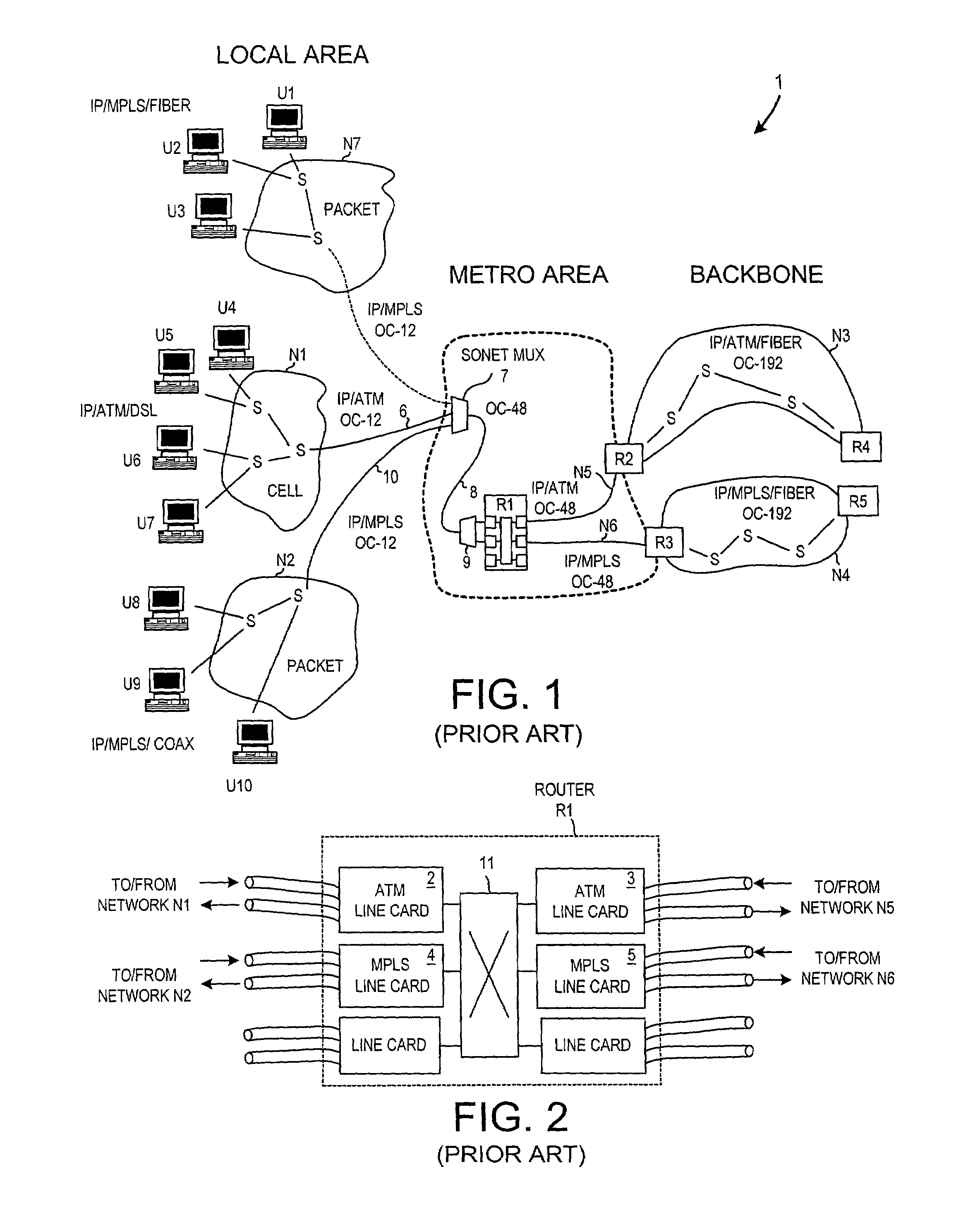Using an embedded indication of egress application type to determine which type of egress processing to perform
- Summary
- Abstract
- Description
- Claims
- Application Information
AI Technical Summary
Benefits of technology
Problems solved by technology
Method used
Image
Examples
Embodiment Construction
[0086]FIG. 4 is a simplified diagram of a router 100 in accordance with an embodiment of the present invention. Router 100 includes a plurality of line cards 101–104, a switch fabric 105 and a central processing unit (CPU) 106. The line cards 101–104 are coupled to switch fabric 105 by parallel buses 107–114. In the present example, each of parallel buses 107–114 is a 16-bit SPI-4, Phase II, LVDS parallel bus operating at 400 MHz at a double data rate (DDR). CPU 106 is coupled to line cards 101–104 by another parallel bus 131. In the present example, parallel bus 131 is a 32-bit PCI bus. In this example, each of the line cards can receive network communications in multiple formats. For example, line card 101 is coupled to a fiber optic cable 115 such that line card 101 can receive from cable 115 network communications at OC-192 rates in packets, ATM cells, and / or AAL5 cells. AAL5 cells are considered a type of ATM cell.
[0087]Line card 101 is also coupled to a fiber optic cable 116 s...
PUM
 Login to View More
Login to View More Abstract
Description
Claims
Application Information
 Login to View More
Login to View More - R&D
- Intellectual Property
- Life Sciences
- Materials
- Tech Scout
- Unparalleled Data Quality
- Higher Quality Content
- 60% Fewer Hallucinations
Browse by: Latest US Patents, China's latest patents, Technical Efficacy Thesaurus, Application Domain, Technology Topic, Popular Technical Reports.
© 2025 PatSnap. All rights reserved.Legal|Privacy policy|Modern Slavery Act Transparency Statement|Sitemap|About US| Contact US: help@patsnap.com



